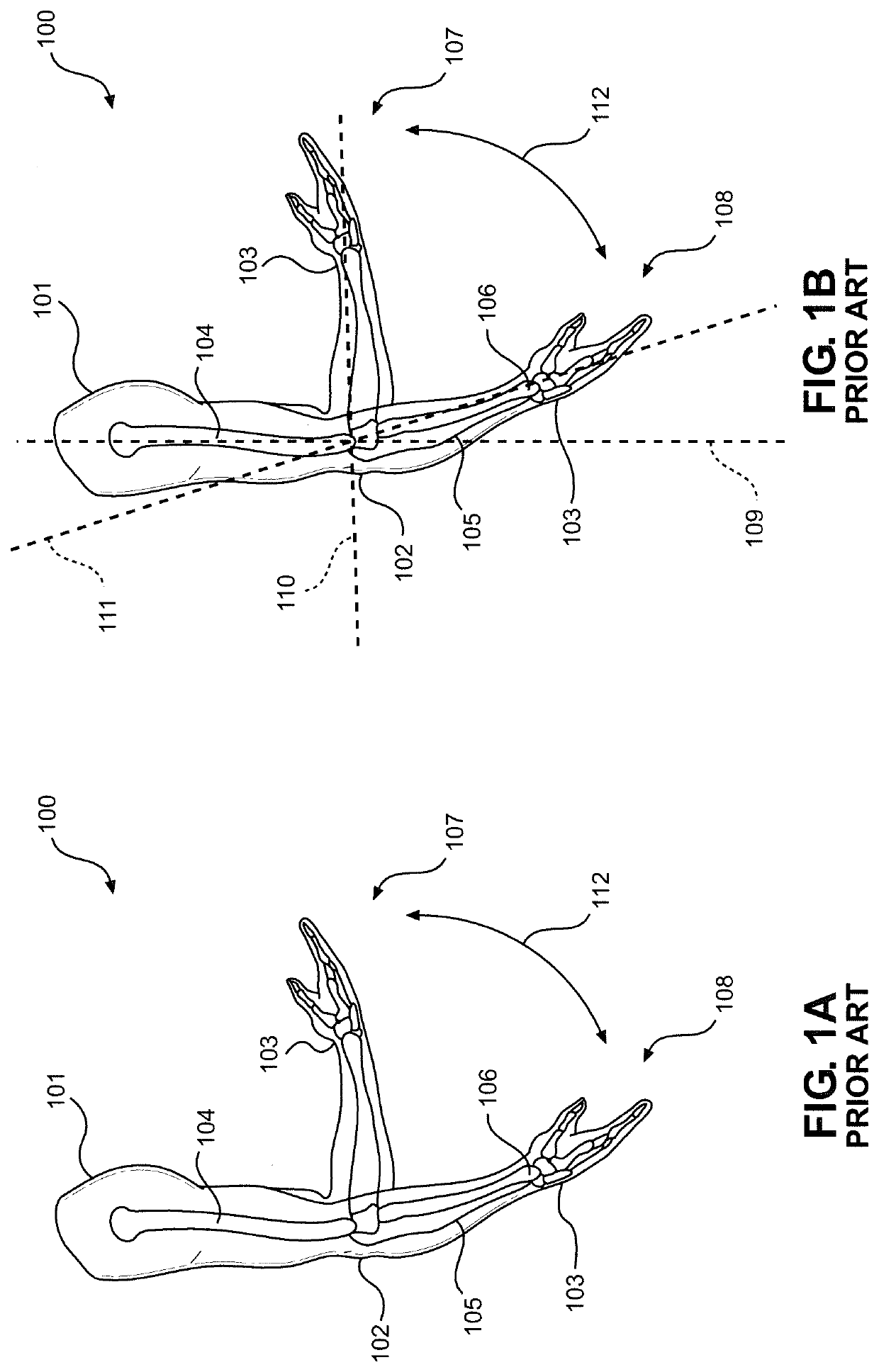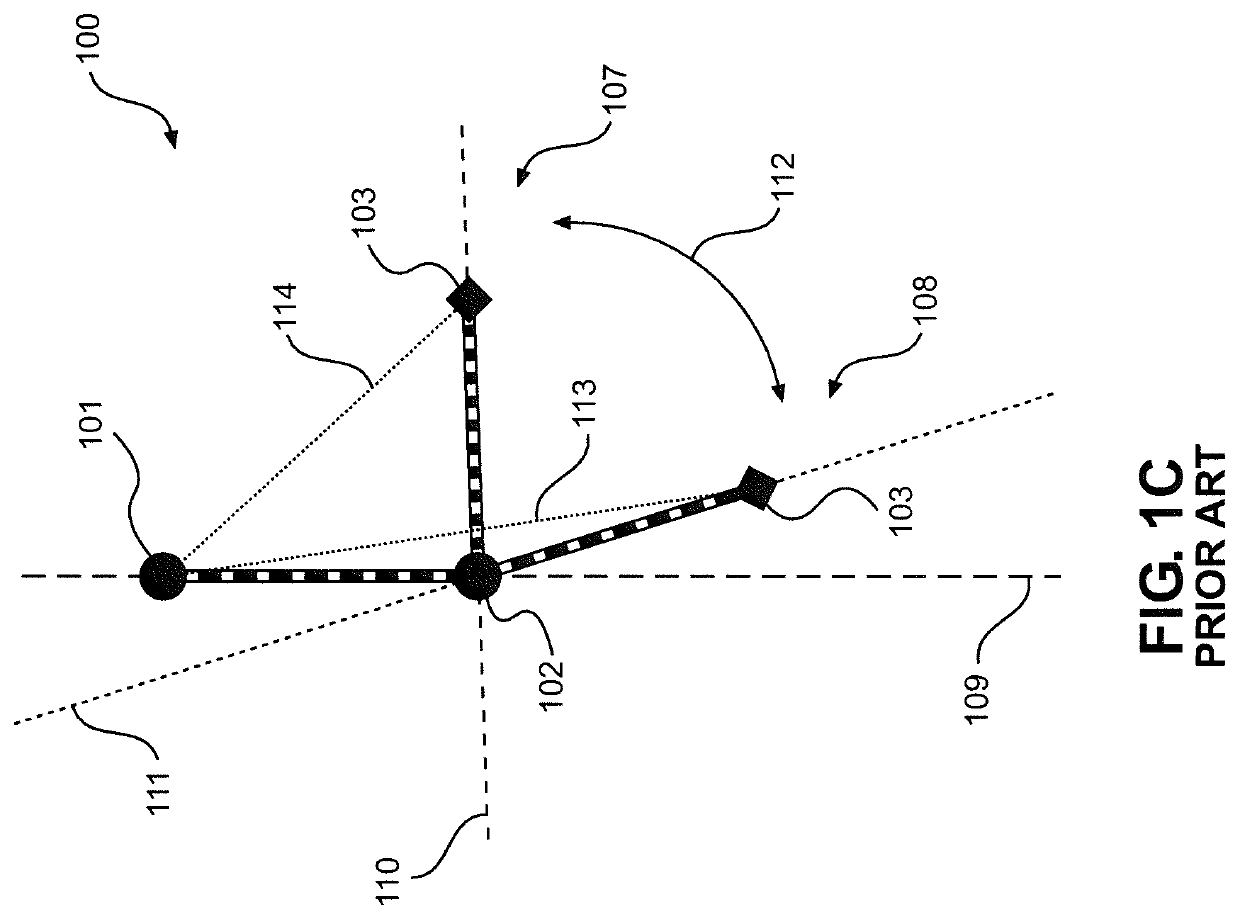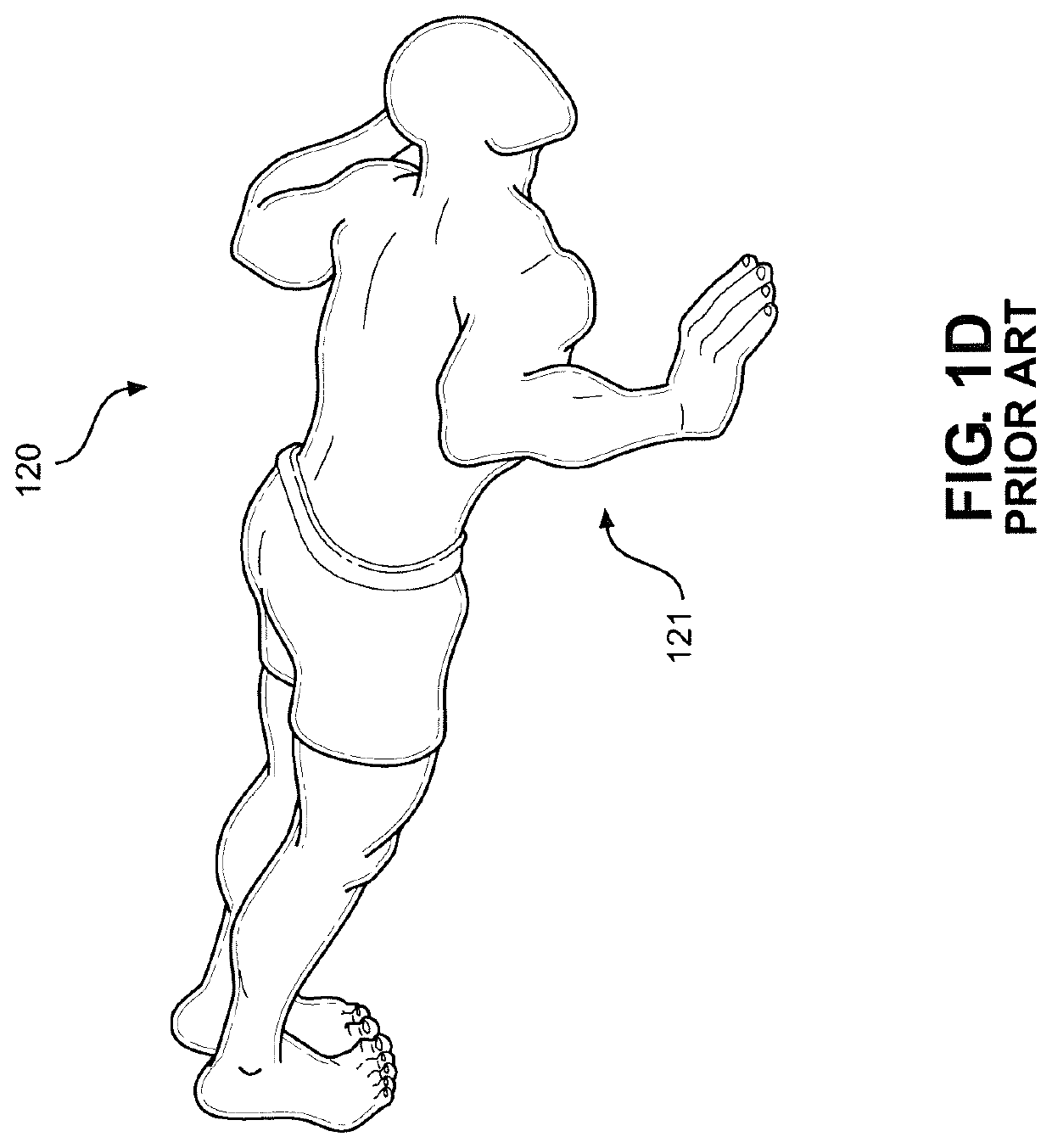Device and Method for Strengthening the Arms of Human Exoskeletons
a technology of human exoskeleton and arm, which is applied in the field of devices and methods for strengthening the arms of human exoskeleton, can solve the problems of reducing speed, limiting the maneuverability of joint and exoskeleton in certain environments, and increasing the bulk of joints, so as to achieve the effect of increasing strength
- Summary
- Abstract
- Description
- Claims
- Application Information
AI Technical Summary
Benefits of technology
Problems solved by technology
Method used
Image
Examples
second embodiment
[0085]FIG. 3J shows person 350 wearing exoskeleton 351 while walking, with exoskeleton 351 being equipped with the device of the Person 350 is carrying an object 378 in a hand 379 of arm 300. A downward force 380 is exerted by the weight of object 378, with downward force 380 being counteracted by arm brace 330. Arm brace 330 is supported by tensile members 357 and 358, with tensile members 357 and 358 passing through shoulder tensile guide assembly 340 to back structure 353. Downward force 380 is thereby transmitted through arm brace 330, to tensile members 357 and 358, and to back structure 353. Back structure 353 is connected to an abdomen structure 382 by a back connector 381. A hip structure 387 is supported by abdomen structure 382 at a hip 384, with hip structure 387 being rotatably connected to an upper leg structure 386 at a hip joint 385. Upper leg structure 386 is rotatably connected to a lower leg structure 390 at a knee joint 389, and lower leg structure 390 is rotatab...
third embodiment
[0088]FIGS. 4C and 4D show how glove 400 is attached to forearm structure 432 in the present invention so as to allow the wrist of person 450 to twist within forearm structure 432. Forearm structure 432 has forearm connections 460 and 461. Glove connection 405 is attached to forearm connection 460 by a strap 462, and glove connection 406 is attached to forearm connection 461 by a strap 463, allowing the transmission of force from forearm structure 432 to glove 400 and inelastic palm structure 402.
[0089]With reference again to FIG. 4B, due to the connectivity of inelastic palm structure 402 to forearm structure 432, force generated by a winch located within a chest structure 452 (not visible) is transmitted by a tensile member 457 from a fixed point 418 to a tensile member attachment point 443, around the hand of person 450, and into glove 400, granting person 450 greater lifting or climbing ability.
[0090]FIGS. 4E and 4F diagrammatically represent the use of the third embodiment in a...
fourth embodiment
[0095]In some variations of the present invention, the hook or tool folds out and locks into position, using mechanisms for opening and closing like those seen in various pocket knife designs or other folding mechanisms known in the art. Such an embodiment is shown in FIGS. 5B and 5C, where a person 502 is wearing an exoskeleton 503 with a folding hook 560 mounted on forearm structure 532. Folding hook 560 has a folder body 572, a pivot 574, and a hook 573. FIG. 5B shows folding hook 560 in a closed position, and FIG. 5C shows folding hook 560 in an open position. The length of such a folding tool can be extended and is generally limited only by the length of forearm structure 532 if it is desirable for the folded tool to be maximally compact when folded.
[0096]In some embodiments, the folding tool uses mechanisms like those seen in folding knives to lock the folding tool in open or closed positions or to assist in the opening of the folding tool, including but not limited to liner l...
PUM
 Login to View More
Login to View More Abstract
Description
Claims
Application Information
 Login to View More
Login to View More - R&D
- Intellectual Property
- Life Sciences
- Materials
- Tech Scout
- Unparalleled Data Quality
- Higher Quality Content
- 60% Fewer Hallucinations
Browse by: Latest US Patents, China's latest patents, Technical Efficacy Thesaurus, Application Domain, Technology Topic, Popular Technical Reports.
© 2025 PatSnap. All rights reserved.Legal|Privacy policy|Modern Slavery Act Transparency Statement|Sitemap|About US| Contact US: help@patsnap.com



